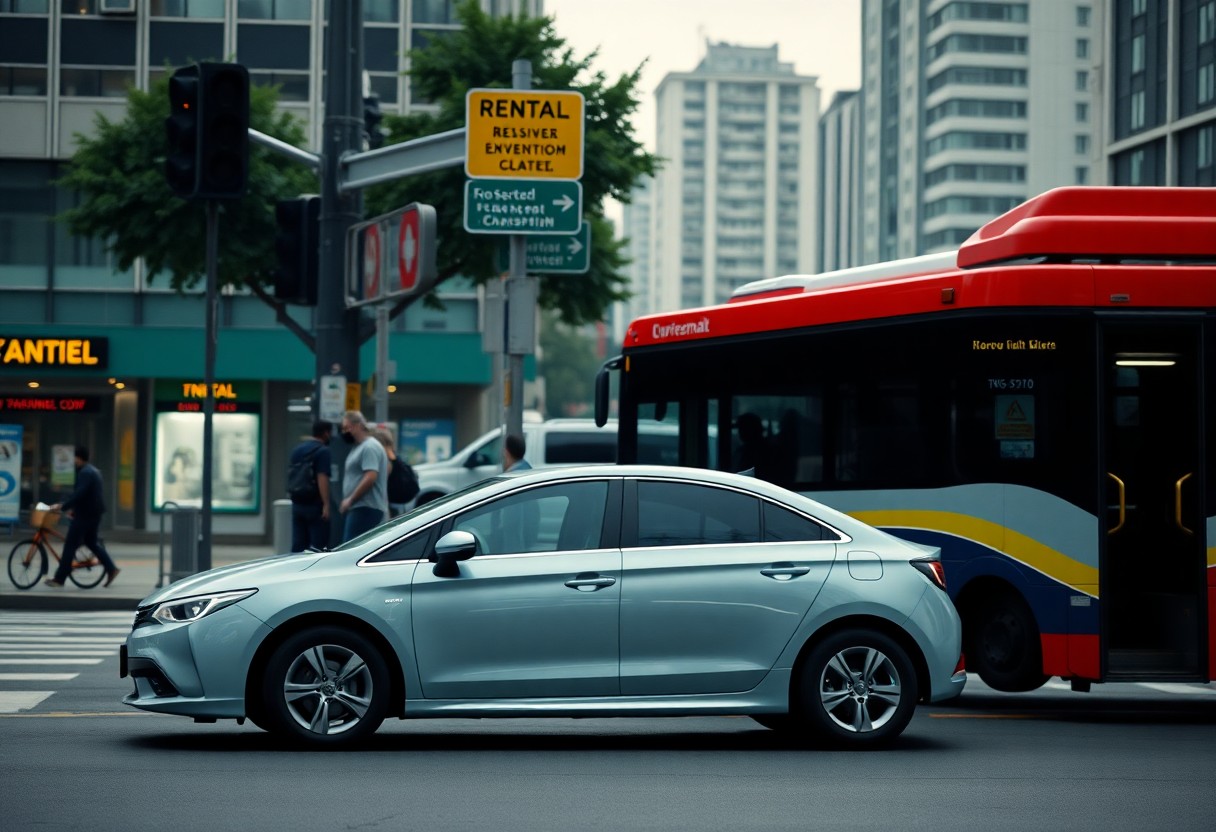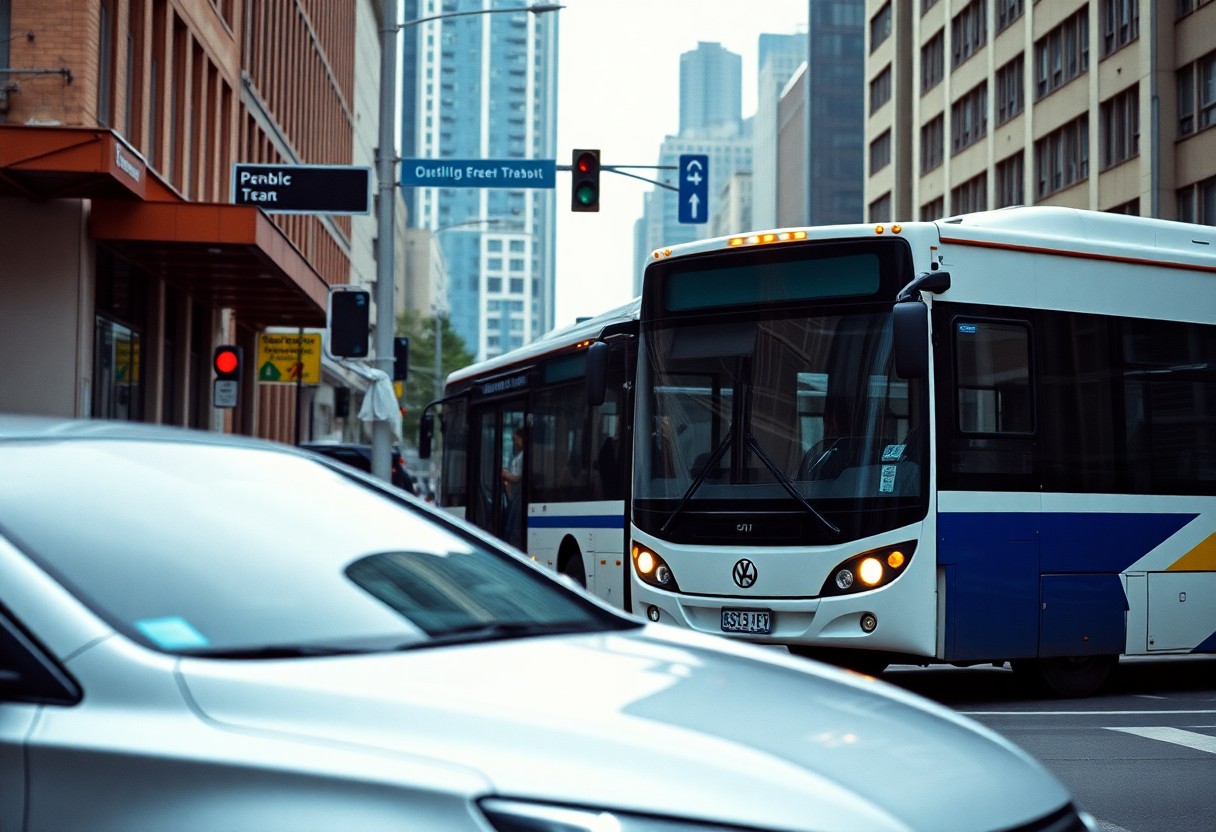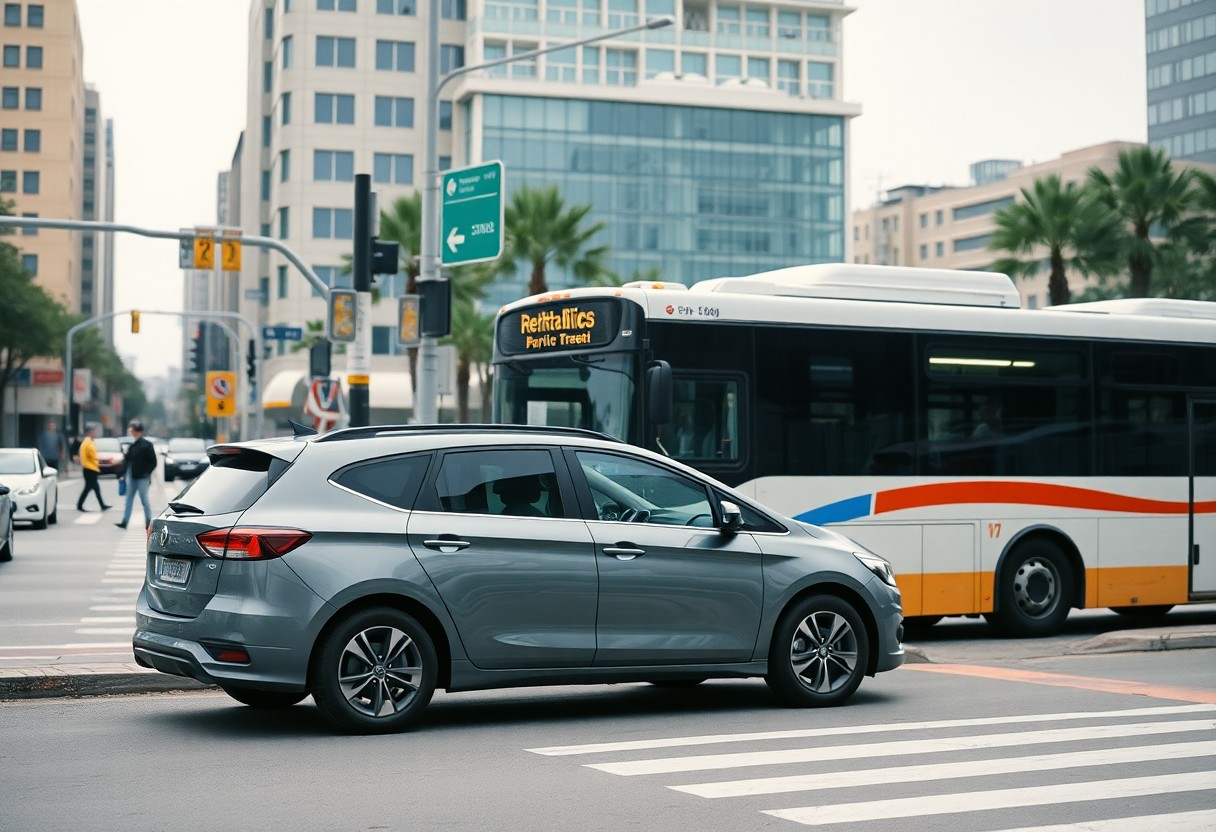As travel expenses continue to rise and personal time becomes increasingly valuable, choosing the most suitable transportation method for your journey is essential. This choice significantly influences both your financial budget and overall travel experience. When planning your next adventure, you will find yourself weighing the freedom of a rental car against the cost-effectiveness of public transportation. Your decision will be shaped by various factors, including your travel destination, planned itinerary, and the number of companions on your journey. This comprehensive guide aims to help you evaluate critical considerations, from unexpected rental fees to public transport accessibility, ensuring that you make a well-informed choice tailored to your unique travel needs.
Unlock Travel Freedom with a Rental Car for Your Next Adventure
Choosing to rent a car opens up a world of travel possibilities, offering unparalleled independence. With a rental vehicle, you gain total control over your itinerary, allowing you to explore destinations that extend beyond typical tourist attractions. Recent studies reveal that 73% of travelers prefer rental cars for their ability to modify plans on the go, making this option particularly attractive for individuals who value autonomy during their journeys. Whether it’s a scenic drive through the countryside or a last-minute detour to a hidden gem, the flexibility afforded by a rental car enhances your overall travel experience.
Weighing the Advantages and Limitations of Rental Cars
Once you secure your rental vehicle, you’ll enjoy newfound freedoms alongside certain limitations. You have the ability to discover remote areas and adjust your schedule as desired, but it’s crucial to be aware of potential costs, such as parking fees, which can average between $25-45 daily in bustling urban areas. While your rental car acts as a personal refuge, you will also need to manage fuel costs and navigate traffic conditions independently. Understanding these factors can help you plan more effectively and enjoy a smoother travel experience overall.
Spotting Hidden Fees and Discovering Unexpected Savings
While the autonomy of a rental car comes with a price, it can also lead to surprising financial benefits. Although initial rental costs may seem high, it’s important to recognize that traveling in a group can often be cheaper than purchasing individual public transport tickets. Recent statistics indicate that families of four or more typically save 15-20% on transportation expenses by opting for a rental vehicle instead of relying on public transit options. This makes renting an attractive choice for group travelers looking to maximize their budgets.
Delving deeper into the financial aspects reveals additional factors worth considering. Insurance costs can add -30 per day to your rental expenses, but many credit card companies offer rental car protection options that can save you money. Furthermore, the fuel efficiency of modern rental fleets (averaging around 30-35 MPG) can help offset overall costs, while the convenience of direct, door-to-door travel saves you significant amounts of precious vacation time.

Master the Public Transportation System for Efficient Travel
If you choose to utilize public transportation, gaining a solid understanding of the system should be your first step. Most major cities now offer user-friendly transit apps that assist with route planning, provide real-time arrival updates, and facilitate ticket purchases. Familiarizing yourself with the local transit network is critical, including bus routes, subway lines, and transfer stations. Research shows that 55% of urban travelers save as much as 30 minutes per trip by using transit applications, making them invaluable tools for efficient travel.
Effectively Navigating the Urban Public Transit Terrain
Every city’s public transportation system has its own unique patterns and operational rhythms. Be prepared for peak hours, typically between 7-9 AM and 4-6 PM, when crowds are at their densest. Your navigation strategy should include alternative routes, as delays can frequently occur during these busy times. Building in a buffer time of 15-20 minutes for critical appointments will help ensure that you arrive on time, minimizing the stress associated with potential delays.
Embracing the Social Dynamics of Public Transit
Beyond practical considerations, using public transportation provides a unique social experience. You will find yourself sharing space with both locals and fellow travelers, allowing you to immerse yourself in the true essence of the city. While this can occasionally lead to uncomfortable situations, it also offers valuable cultural insights. Research indicates that regular public transit users develop enhanced social adaptation skills as they navigate various social scenarios, enriching their travel experiences.
At times, you may find yourself maneuvering through diverse social situations on public transport. From the bustling energy of rush hour to the quiet solitude late at night, each time period presents its own unique atmosphere. Safety becomes particularly critical during off-peak hours, making it essential to remain vigilant and choose well-lit, populated areas for waiting. Most transit systems now feature 24/7 security monitoring and emergency communication systems to enhance your safety during travel.
Analyze the Financial Implications of Your Travel Decision
When evaluating your travel options, budgeting is a key factor in deciding between rental cars and public transit. Your transportation expenses can fluctuate significantly based on your destination, trip duration, and group size. While rental cars offer enhanced flexibility, they also come with hidden costs such as insurance, fuel, and parking fees. Although public transit may appear less expensive at first glance, frequent daily rides can quickly accumulate costs, especially for those who travel often or longer distances.
Breaking Down the Comprehensive Costs of Driving
A thorough financial analysis of car rentals reveals expenses that extend beyond the daily rental rate. You should not overlook $30-50 daily for insurance, average fuel expenditures of $40-60 per tank, and potential parking fees that can escalate to $50 per day in major metropolitan areas. As a result, your total daily travel costs could range from $100-200, making this option more economically feasible when traveling as a group, where costs can be shared effectively.
Deciphering the Cost Structure of Transit Tickets
At first glance, public transportation often appears to be the more budget-friendly option. In cities like New York, where average metro cards cost $34 for unlimited weekly rides, significant savings can be achieved compared to rental car expenses. Moreover, you can avoid additional costs such as parking and fuel, making public transit particularly advantageous for solo travelers who prioritize cost-effectiveness.
Cost comparisons illustrate that weekly public transport passes in many large cities range from $25-40, providing unlimited rides. However, for families or groups of four or more, the combined cost of multiple transit passes might exceed the expense of renting a car, especially when planning extensive daily travel or trips to areas with limited public transport accessibility.

Maximize Your Time Management for a Seamless Travel Experience
As you contemplate your options between rental cars and public transport, it’s vital to prioritize your schedule. A rental car facilitates direct, point-to-point travel, potentially saving you up to 40% of your travel time compared to public transportation alternatives. Your time is invaluable; while public transport may seem less expensive initially, it is crucial to factor in the hours spent waiting, transferring, and walking to and from stations, which can add up quickly.
Embrace the Flexibility of a Rental Car for Scheduling Convenience
When it comes to time flexibility, a rental car offers complete autonomy over your departure and arrival times. You are free from strict transit schedules, allowing for spontaneous detours or last-minute adjustments to your itinerary. This level of freedom is especially valuable when plans change unexpectedly or when you discover hidden gems during your travels that merit exploration.
Overcoming the Challenges of Public Transport Schedules
One of the main challenges associated with public transportation is adhering to established schedules. Studies indicate that 23% of urban buses fail to operate on time during peak hours, which may require you to make multiple connections. Delays in one service can create a ripple effect, disrupting your entire day’s agenda. To navigate public transport effectively, it’s wise to incorporate extra buffer time into your plans.
Transport experts recommend adding 15-20 minutes to your estimated travel time for each connection. During rush hours or special events, consider increasing these buffers, as they can significantly impact the amount of time you have available for activities and sightseeing.
Consider the Environmental Impact of Your Transportation Choices
When evaluating your transportation options, it’s crucial to recognize the environmental repercussions of your decisions. A single-occupancy rental car emits approximately 404 grams of CO2 per mile, while public transportation can reduce emissions by up to 45% per passenger. The choice between renting a car and using public transport has a lasting environmental footprint, making it essential to consider the broader impact of your travel choices.
Assessing Your Carbon Footprint During Travel
Every mile you travel is directly linked to climate change and environmental degradation. A fully-loaded bus can replace the need for 50 cars on the road, significantly lowering overall carbon emissions. Your journey in a rental car can produce 4-5 times more CO2 than an equivalent trip via bus or train. However, choosing electric or hybrid rental options can help ease this environmental burden and promote more sustainable travel practices.
Exploring Eco-Friendly Transit Options Upon Arrival
Upon reaching your destination, you’ll encounter a range of environmentally friendly transportation alternatives. Electric car rentals can lower your carbon footprint by up to 50% compared to traditional vehicles. Additionally, many cities now feature hybrid buses and electric trams, making public transport an increasingly sustainable option for travelers who wish to minimize their environmental impact.
Ultimately, your environmental footprint can vary significantly based on the transportation choices you make. Consider adopting a mixed-method approach – rent an electric or hybrid vehicle for longer trips while relying on public transport in congested urban areas. Numerous rental agencies now offer green vehicle options, allowing you to maintain mobility while reducing your ecological footprint during your travels.

Enhancing Your Comfort While Traveling
In contrast to public transportation, rental cars provide total control over your comfort preferences. You can easily adjust the climate, seating arrangements, and audio settings to suit your personal tastes, creating a customized travel atmosphere. This level of personalization becomes especially important during extreme weather conditions or lengthy journeys, where overall comfort can significantly influence your travel enjoyment and satisfaction.
The Advantage of Personal Space in Rental Vehicles
One of the primary advantages of renting a car is the guaranteed personal space it offers. You won’t have to deal with crowded buses or trains, where personal space often shrinks to less than 4 square feet during peak travel times. Your rental car serves as a private oasis, allowing you to maintain full control over who shares your travel environment, ensuring a more pleasant and relaxed travel experience.
The Varied Comfort Levels of Public Transportation
Comfort levels on public transit can vary widely due to external factors beyond your control. During peak hours, you may find yourself squeezed in with 150-200 passengers in a single subway car, significantly diminishing your comfort. The experience often entails standing for extended periods, especially during the average 38-minute commute in major metropolitan areas, which can be taxing and uncomfortable.
During a typical rush-hour scenario on public transport, noise levels can peak at around 80-90 decibels, comparable to the sound of heavy city traffic. These conditions, combined with unpredictable delays and service interruptions, can make your journey less enjoyable and more stressful, especially when traveling with luggage or in a group.
Choosing the Right Transportation Method Based on Your Needs
Ultimately, your decision between renting a car and using public transport should be based on your specific travel needs and preferences. If you prioritize flexibility and comfort, particularly when traveling with family or friends, a rental car typically offers the best value, even considering the higher initial costs associated with this option. Conversely, public transportation can be an excellent fit for solo travelers on a budget who stick to established routes in urban areas. It’s essential to weigh factors such as your destination, group size, planned activities, and budget. By thoughtfully evaluating these components against your personal priorities, you can select the transportation option that aligns best with your travel aspirations.
The Article: Renting a Car vs. Public Transport: Which is Best for Your Trip? appeared first on https://rentacar24.org/
The Article Renting a Car vs. Public Transport: Choose the Best Option for You Was Found On https://limitsofstrategy.com


